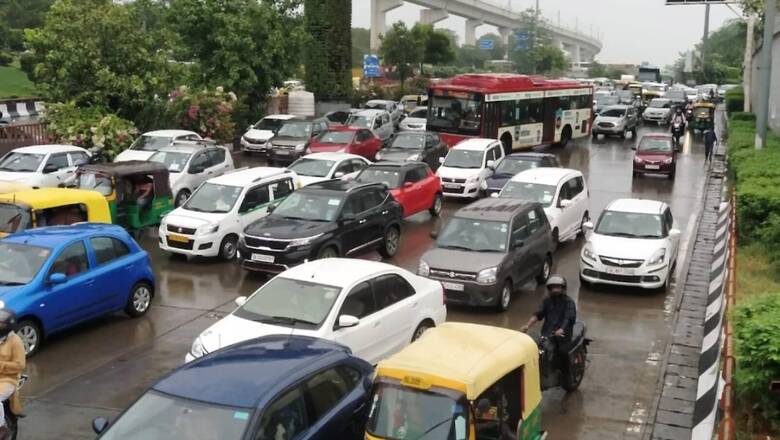
views
New Delhi: Researchers at the Indian Institute of Technology (IIT) Mandi, have developed a Smart Road Monitoring System to help reduce manual intervention in traffic management and prevent accidents caused at sharp or blind turns. According to the team which has also acquired a patent for the innovation, the system can be used for speed detection, vehicle counts, enhanced traffic control and road usage, by employing the Micro-Electro-Mechanical Systems(MEMS) and Internet of Things (IoT) technologies.
“With a surge in traffic, the manual interface becomes a challenge to control and prevent road accidents, and traffic management especially in the hilly terrains. Traffic Police intervention, convex mirrors installation, and other techniques, though helpful in these situations, become difficult to manage in severe and extreme conditions like rainfall, snow, foggy weather and high number of sharp curves," said K V Uday, Assistant Professor, School of Engineering, IIT Mandi. Uday explained that the developed system comprises two layers of detection units on each side of the turn and two signalling units to alert the drivers. When a vehicle passes through the two consecutive layers of detection units, the sensing system detects the speed, direction and type of vehicle (two/ four/multiple wheels). The detected direction confirms if the vehicle is advancing towards the turn, and a corresponding signal (light, sound or barrier) is displayed on the other side to alert the drivers of an oncoming vehicle. If the vehicle moves away from the curve, no signal is displayed. The signals are decided based on the speed, direction, gradient of slope and type of vehicle.
At a prototype development stage, the system costs less than Rs 20,000 excluding the alerting units per curve. However, the innovators are currently working on the commercial aspects and trying to bring down the overall product cost, by lowering operating and maintenance costs, and utilising other energy sources to make the system self-sustainable using solar energy. “This technique will not only reduce the accident risk in sharp curves, but will also help in reducing human intervention on traffic counts, management and helps in decision making," he said.
The developed system can also be used for vehicle counts and its advanced versions will also be able to detect the load of the vehicle. “This data can be used for enhanced traffic management, road use, traffic flow on single line tunnels and restricted areas by employing Artificial Intelligence and machine learning tools. The prediction on traffic jams, increased flows and diversion alerts also can also be generated after sufficient data collection," he said.
Also Watch:
The team claimed that besides being mechanical in nature, the developed system can work in any weather including rain, snow, fog or other poor visibility conditions and the data can be encrypted and shared to only appropriate stakeholders. “Though existing technologies are effective, their effectiveness drastically is affected during adverse weather conditions, that is where our system is robust," he added. Other members of the team included Naman Chaudhary and Shishir Asthana from Mechanical Engineering; Amudhan Muthaiah from Electrical Engineering and Nidhika Kadela from Civil Engineering departments of the institute.
Read all the Latest News, Breaking News and Assembly Elections Live Updates here.




















Comments
0 comment